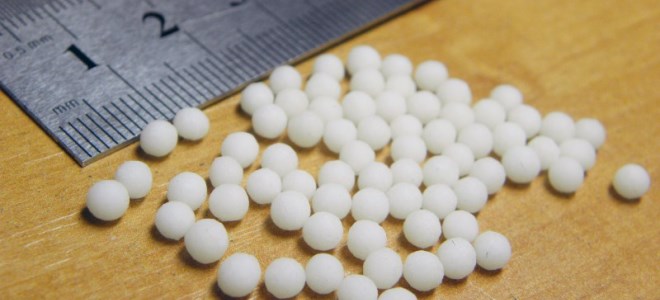 Urea or karambid belong to the group of nitrogenous fertilizers and are widely used in agriculture. It is appreciated for its high efficiency and low price.
Urea or karambid belong to the group of nitrogenous fertilizers and are widely used in agriculture. It is appreciated for its high efficiency and low price.
Content
Description
Carambide is of two varieties, as a variety B is used as a fertilizer. It is produced in the form of granules and tablets (more efficient, less consumption, but more expensive). Outwardly, these are granules of white color with a gray-yellow tint. The greater effectiveness of the tablets is achieved due to the protective shell, which leads to a higher price of such carambide.
How to dilute urea for watering
Most often, two types of compositions are used, these are 0.5% and 1%. Therefore, it is easy enough to count. If you breed 10 liters, it turns out 50 or 100 grams of fertilizer to add to the water. If you take 1 liter of water, then, therefore, you need to take ten times less fertilizer - 5-10 grams. And you will get a solution.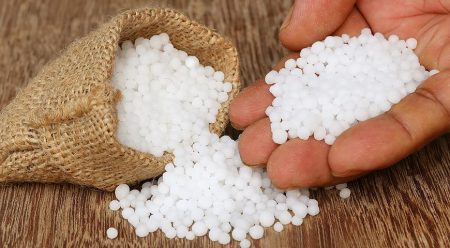
Dosage
If you are spraying, then be careful not to burn the leaves, and no more than 15 ml per plant is used. If you use fertilizer as root, then the volume can be increased to 30 ml.
| Procedure, types of work | Application rate | Recommendations for instructions |
|
Dry application (granules)
|
50 g - 100 g / 10 m² | We put in a hole 10 cm into moist soil, watering after application |
|
We use a liquid composition in the soil (solution) |
200 g / 10 m² | for vegetable gardens with fruit trees and berries |
| spraying | 50 g - 100 g / 10 l of water / 20 m² | for vegetables, a solution of 50 g / 10 l is used, for trees and shrubs 100 g / 10 l |
| During landing | 4 g - 5 g / 1 well | Fertilizer should be mixed well with the ground, and hidden 10 cm deep |
| root dressing for vegetables | 3 g / 1 l of water / 1 plant | during the formation of the ovaries increase to 5 g / 1 l of water / 1 plant |
| introduction under decorative and berry bushes | 70 g / 1 bush | sprinkled around the bush and covered with earth, after carefully watered |
| application under trees |
100 g - 250 g / 1 tree
|
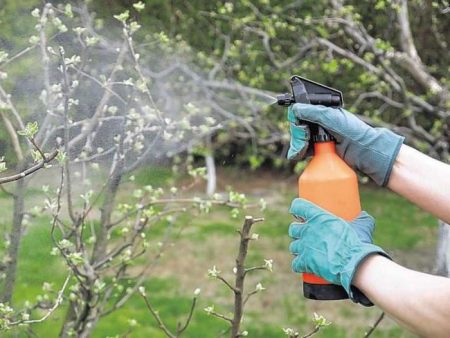
Pest Control with Carambide
Carambide is used until the kidneys appear, at a temperature outside of about 5 degrees. Urea spraying is used when there were a lot of parasites in the previous year. Carambid helps against aphids, weevils, apple flower beetles, and copper flakes.
Most often, a solution is used at the rate of 30 g of substance per 10 l of water, but not more than 100 g per 10 liters. If you exceed the concentration, you can harm the plant.
Proper use of liquid carambide
When using urea, it is necessary to determine the types of plant nutrition:
- Processing before sowing - use carbamide granules, it is introduced into the furrows of the earth.
- Top dressing during sowing - can be combined with potash fertilizers. It is important to remember that you can not mix fertilizer and seeds. Between them there should be a layer of earth.
- During growth, foliar feeding of plants is considered the most effective way. In this case, liquid urea is used. Spraying leaves and shoots is carried out in the early morning or already at sunset, so that the sun does not fall on them, as well as in the absence of wind.
Garden application
Urea is bred at the rate of 15-50 g per 10 liters of water, depending on the processing time.You can use the foliar method, but you need to be careful not to damage the green part of the plant.
Garden application
For spraying horticultural crops, special packages of urea in combination with copper sulfate are sold. The packaging is diluted in 10 liters of water and the plants are treated until the buds appear. You can also work with a similar solution in the fall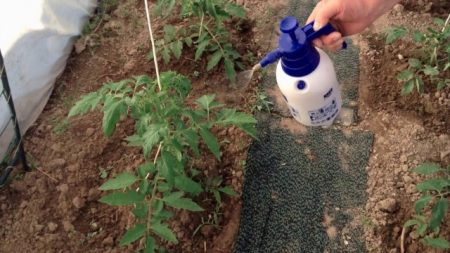
Urea composition
Urea is obtained from carbon dioxide and ammonia, the formula of the substance — H2N-CO-NH2. Urea contains 45% nitrogen, which makes it an effective fertilizer.
Advantages and disadvantages of using urea
Benefits:
- Acceleration of plant growth;
- Increase in protein content (especially noticeable for cereal crops);
- Easy to use, easily soluble in water;
- The ability to get rid of pests at the same time;
- No accumulation of nitrates when following the instructions.
Negative aspects of use:
- Not combined with all groups of fertilizers;
- The temperature of the solution is lower than the temperature of the air;
- If you exceed the dosage, you can cause a burn in the plant or its death.
Reviews
«Advantages: quality
Disadvantages: no
Bought fertilizer for my grandmother to try. Her general impression is good; our grandmother was still Stalinist hardened and brought up during the Soviet Union. She compared this fertilizer to that produced in Soviet times. "

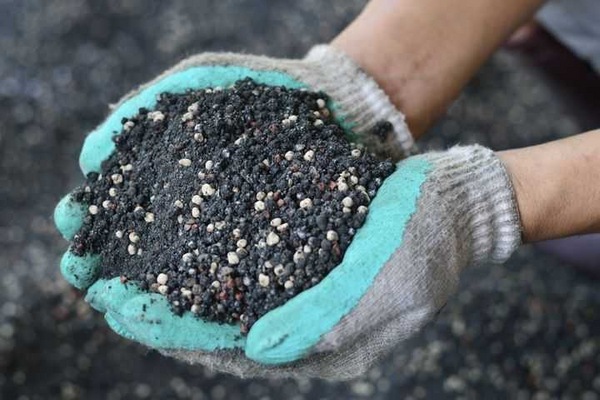
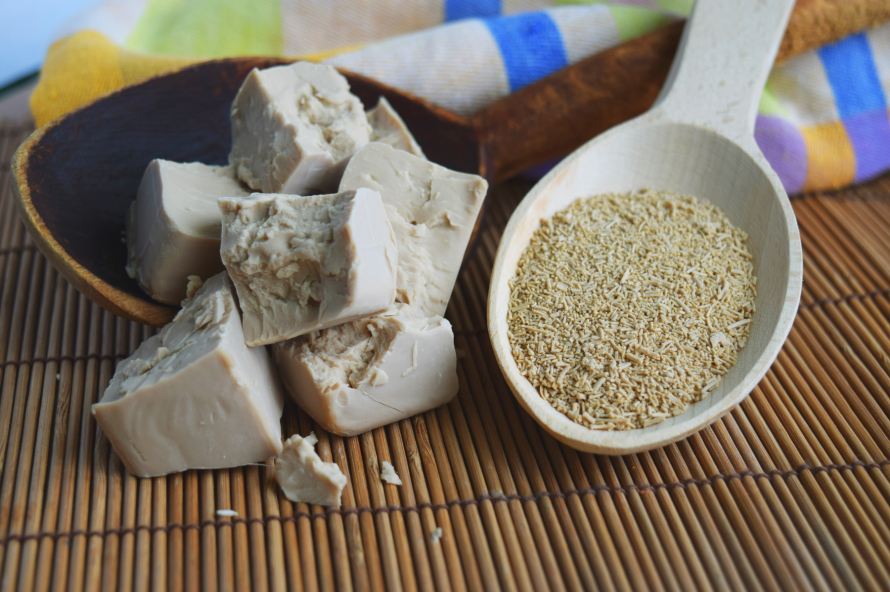
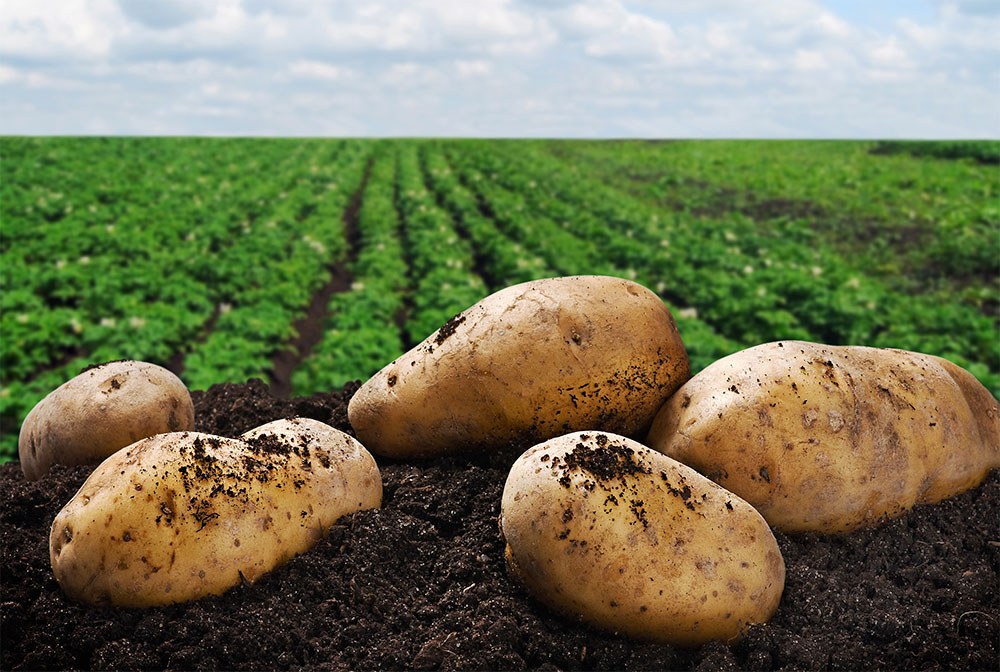
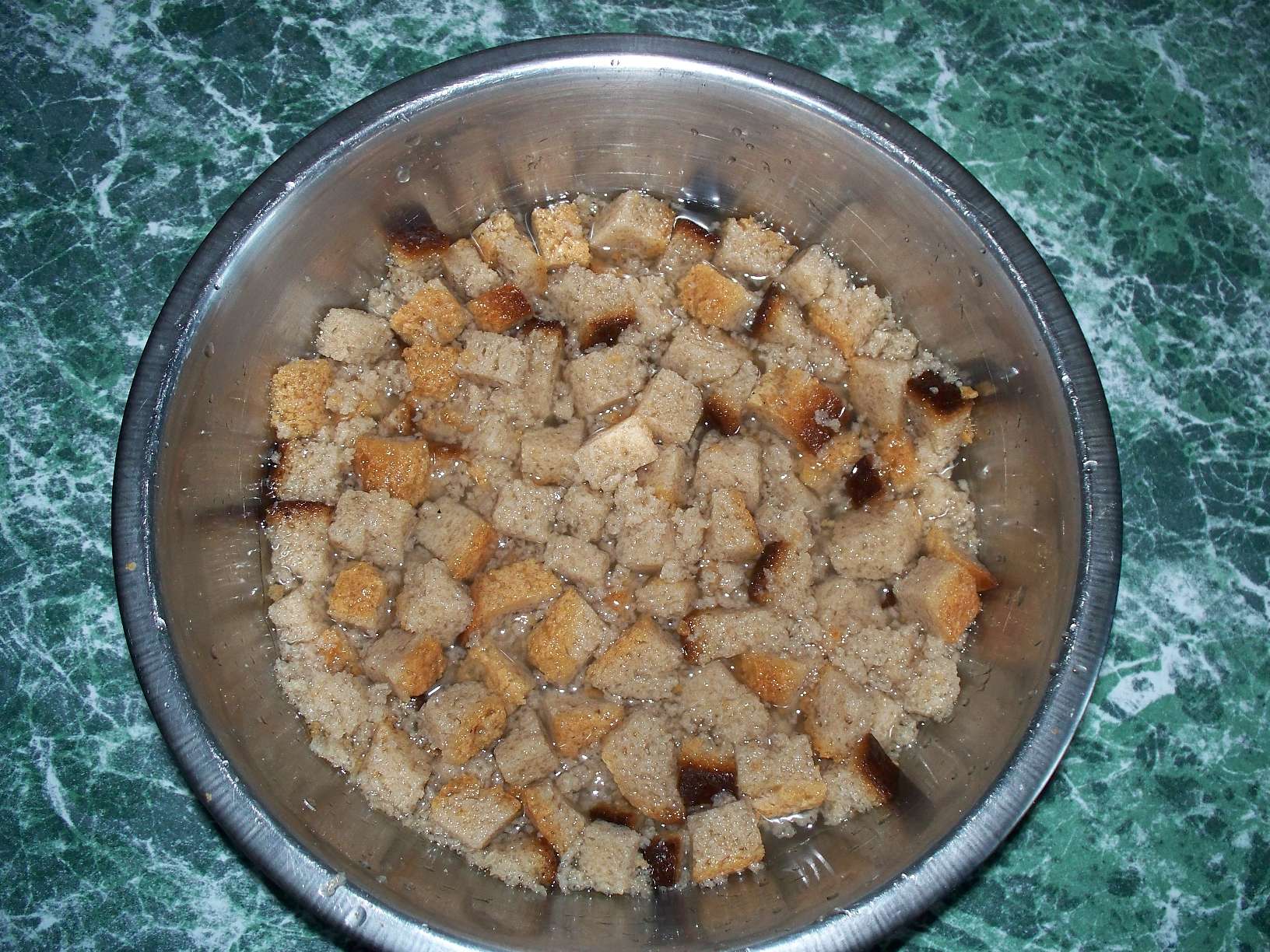 How to make bread infusion for feeding cucumbers
How to make bread infusion for feeding cucumbers Superphosphate: what is it and how to apply it
Superphosphate: what is it and how to apply it What problems can be expected from siderats?
What problems can be expected from siderats? Secrets of the collection, storage and use of eggshells in the garden
Secrets of the collection, storage and use of eggshells in the garden
Kolya
you look after your speech —- literate